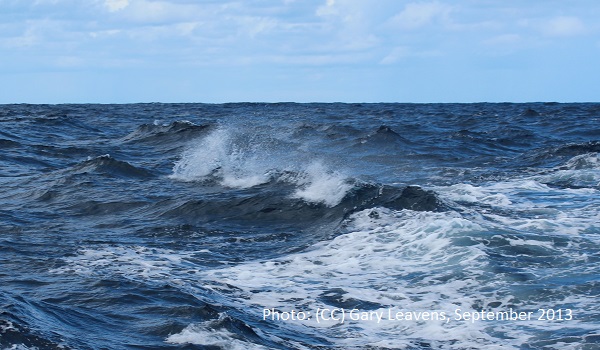Over the first weeks of 2021 more than 1,000 people have arrived to the Canary Islands. The death toll of close to 2,000 in 2020 continues and with latest incidents 11 people have lost their life trying to reach the islands so far this year. Hundreds of people are detained at the Barranco Seco camp under harsh and cramped conditions for up to 10 days, well beyond the legal limit of 72 hours. The Spanish government is under critique for its slow and inadequate response to arrivals.
According to statistics from the Ministry of Interior 1,069 migrants in 28 dinghies and small boats have arrived to the Canary Islands over the first two weeks of 2021. While this represents a 234% increase compared to the same period in 2020, arrivals slowed down compared to 3,457 in December and 8,157 in November. Following recent loss of life at the Atlantic route the death toll continues to raise.
At least 1,851 people died trying to reach the Canary Islands in 45 shipwrecks throughout 2020. In the first 20 days of 2021, 11 people already lost their lives. Two people have died following the arrival of a boat in El Hierro, one died during the night and one after being transferred to the island’s hospital on 19 January. Three others are still hospitalized with severe hypothermia after arriving at the port of La Restinga. A 12-year old girl watched the dead body of her nine-year old brother being thrown overboard from a boat carrying 34 people including several children and a pregnant woman. The boy had died only hours before his fellow travellers reached the port of Arguineguín following a rescue by the Spanish coastguard. They had been lost at sea for five days and people on-board suffered exhaustion, dizziness, dehydration and weakness when they were spotted by a rescue plane.
Following the dismantling of the notorious makeshift camp at Arguineguín pier in early December 2020, mistakes are repeated in the Centro de Atención Temporal a Extranjeros (CATE) known as Barranco Seco camp that replaced the camp at the pier. It too has become a makeshift camp with semi-open military tents nailed into the dirt and thin blankets under stormy, cold and humid conditions, no serving of hot food, and lacking access to regular showers as well as legal counselling. The around 260 people, among them an unaccompanied child, in Barranco Seco have been detained under cramped conditions with no space for sanitary isolation for up to 10 days given the lack of adequate facilities for quarantining, despite the legal limit of 72 hours of detention.
The Ministry of Migration has announced the imminent opening of the first phase of a reception centre on former military grounds in Las Palmas with an initial capacity of 442 people and with capacity to accommodate a total of 1,320 once completed. The construction is undertaken in the context of the Spanish government promise of 7,000 accommodation spaces. The response to the increase of arrivals at the Canary Islands by the Spanish government has been heavily critisised by local authorities and politicians. Spokesperson for Nueva Canarias, Luis Campos defines the response as desperately slow. He adds that the government has failed to follow up on offers from several regions to accept people from the islands and warns that without transfers to the mainland and territorial solidarity the islands are turned into a prison for people seeking to transit. After more than three months stuck in Tenerife, 170 people of Senegalese descent who seek to join their relatives on the mainland entered a hunger strike.
For further information:
- ECRE, Atlantic Route: Arrivals and Loss Of Life Continue, Restrictions of Departures to Mainland, January 2021
- ECRE, Atlantic Route: Deadly Incidents and Concern over Conditions for Children, January 2021
- ECRE, Atlantic Route: Pier of Shame Dismantled after Ombudsman Denounces Human Rights Violations, December 2020
- ECRE, Atlantic Route: Containment, Return, Deterrence – Spain’s Response to Increased Sea Arrivals, November 2020
- ECRE, Atlantic Route: Alarm over Inadequate Reception as Arrivals to the Canary Islands Continue to Increase, November 2020
- ECRE, Atlantic Route: Arrivals Continue, Miserable Conditions at Arguineguín Pier, Ombudsman Investigating Lack of Legal Assistance, November 2020
- ECRE, Atlantic Route: People Face Death at Sea and Miserable Conditions upon Arrival in the Canary Islands, High Prosecutor’s Office Prohibits Separation of Children, October 2020
- ECRE, Atlantic Route: Arrivals in Canary Islands Continue to Rise, more than 1,000 People Cramped at Arguineguín Pier, Children Separated from their Parents for Months in Order to Prove Kinship, October 2020
- ECRE, Spain: Exponential Increase in Arrivals in the Canary Islands, Capacity Stretched, Intense Rescue Activity in Spanish Waters, October 2020
- ECRE, Spain: Surge in Arrivals via the Atlantic Route, Devastating Conditions in Melilla Continue, People Rescued South of Granada, September 2020
- AIDA, AIDA 2019 update: Spain*, April 2020
- ECRE, Op-ed: Cooperation with Morocco in the EU’s African Border – a laboratory of externalization, January 2018
Photo: (CC) Gary Leavens, September 2013
This article appeared in the ECRE Weekly Bulletin. You can subscribe to the Weekly Bulletin here.

